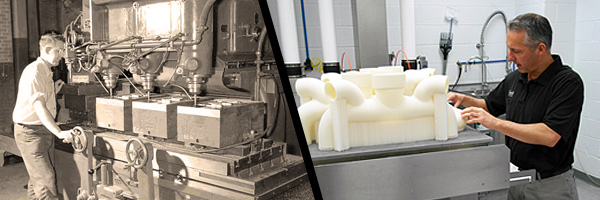All additive manufacturing methods have one thing in common: Material is added on or built up in the process to create the shape of the final prototype or end-use part.
ProtoCAM does most of its work using additive manufacturing technologies such as stereolithography (SLA), selective laser sintering (SLS), fused deposition modeling (FDM), direct metal laser sintering (DMLS) and PolyJet 3D printing. While each method has its own best use case, they are all based on the same additive principle.
By contrast, with subtractive prototyping a large piece of metal, plastic or other substance is shaped by removing or cutting away some of the material. Subtractive prototypes are typically created using traditional manufacturing processes–mostly standard machining processes such as milling, turning/lathing or drilling–or more modern computer-driven tools such as CNC machining.
While subtractive prototyping is limited to relatively simple shapes, additive manufacturing can create complex geometries impossible with any other technology. The material for subtractive prototyping must also be readily available in a size and shape that far exceeds what will be contained in the final product. The percentage of waste product is incredibly small with additive manufacturing since the processes uses only what is necessary to complete the final shape. Additive manufacturing is also much faster than subtractive prototyping (hence the term, “rapid manufacturing service“), potentially cutting time to market substantially.
If time, design complexities and materials are critical, additive rapid prototyping is likely the best choice. Contact ProtoCAM to see how additive manufacturing can bring your concept to life.

